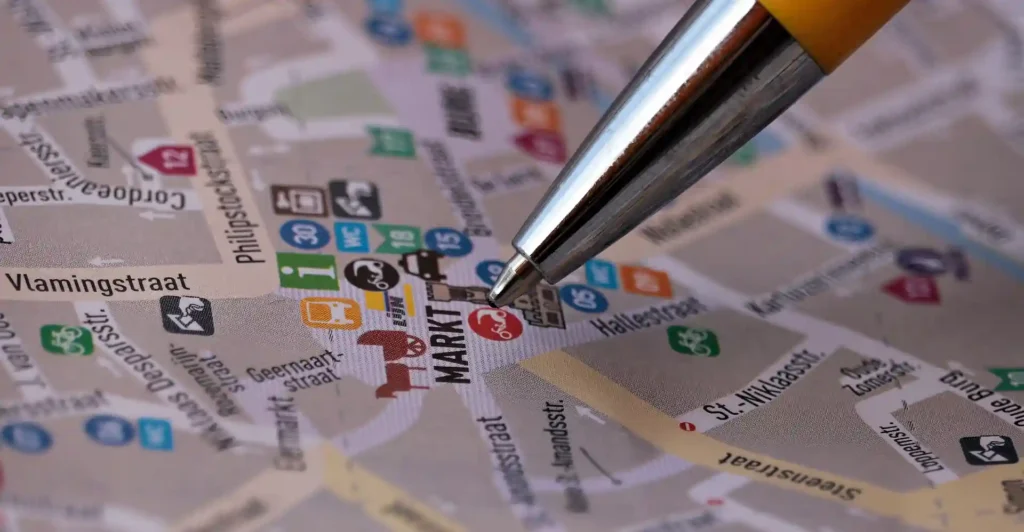
Harnessing the Potential of GIS for Architecture with AI
Geographic Information Systems (GIS architecture) play a crucial role in modern construction and urban planning by providing valuable geospatial data that influences design, planning, and development decisions. With the integration of AI, GIS tools can offer even more precise insights, automating geospatial analysis, integrating GIS data into architectural 3D models, and helping visualize environmental impacts.
How Can AI Improve the Use of GIS Software in Architectural Projects with GIS Architecture Software?
AI improves GIS architecture by automating geospatial analysis, seamlessly integrating GIS data with architectural models, and helping visualize the environmental impacts of construction projects.
Automated Geospatial Analysis for Site Planning
AI-powered GIS architecture tools are revolutionizing the way geospatial data is analyzed for site planning and construction. Key benefits include:
- Automatically analyzing terrain, land use, and transportation networks through GIS software, providing architects with comprehensive data for making informed site planning decisions.
- Using AI to combine geospatial data with building analytics, architectural surveys, and project-specific requirements, ensuring that the site’s constraints and opportunities are fully understood.
- Creating precise 3D models that incorporate geospatial data, helping architects visualize how the terrain will interact with the building design.
By automating geospatial analysis, AI ensures that architects and urban planners can make data-driven decisions during the preliminary design and feasibility studies phases.

Use GIS in architecture for urban planning and spatial analysis.
Integrating GIS Data into Architectural 3D Models
AI allows for the seamless integration of GIS architecture data into 3D models used by architects and engineers. This integration ensures that site-specific factors are considered during the design process. Key capabilities include:
- Automatically importing geospatial data into BIM software, ensuring that environmental factors, land use, and infrastructure are reflected in the building’s design.
- Enhancing modeling software with accurate terrain and geospatial data, ensuring that the building design is optimized for the specific site location.
- Facilitating interoperability between different tools, including GIS software, BIM management platforms, and rendering software, ensuring that all project teams are working with the same data.
This integration makes it easier to create accurate and context-aware 3D models, improving both design quality and project efficiency.
Visualizing Environmental Impacts Using GIS Data
One of the key strengths of AI-driven GIS architecture tools is their ability to visualize the environmental impacts of construction projects. AI can:
- Analyze environmental factors, such as water flow, vegetation, and protected areas, to visualize the impact of the building’s footprint on the surrounding environment.
- Use image manipulation and image generators to create realistic visual representations of how the building interacts with its natural surroundings.
- Provide real-time data on environmental regulations and compliance, helping architects ensure that their designs meet local planning requirements during the tender phase and construction phase.
This capability allows architects and project managers to create more sustainable and environmentally friendly designs while ensuring compliance with regulations.
FAQ: 5 Questions About GIS Architecture
How does AI improve geospatial analysis for site planning?
AI-powered GIS architecture tools automate the analysis of terrain, land use, and infrastructure, providing architects with detailed geospatial insights that inform site planning and design decisions.
Can GIS data be integrated into architectural 3D models?
Yes, AI allows for seamless integration of GIS software data into 3D models used in BIM software. This ensures that the design accurately reflects the geospatial and environmental context of the site.
How does AI help visualize environmental impacts in construction?
AI uses geospatial data to create visual representations of environmental impacts, helping architects understand how their designs will interact with the natural surroundings and ensuring compliance with environmental regulations.
What role does AI play in integrating GIS data with other construction tools?
AI facilitates interoperability between different tools, such as GIS software, BIM management systems, and modeling software, ensuring that all teams work from the same geospatial data throughout the project.
How can AI-driven GIS architecture tools improve project sustainability?
AI-powered GIS architecture tools help architects analyze environmental factors and visualize the impact of their designs on the surrounding ecosystem, leading to more sustainable and compliant infrastructure projects.




